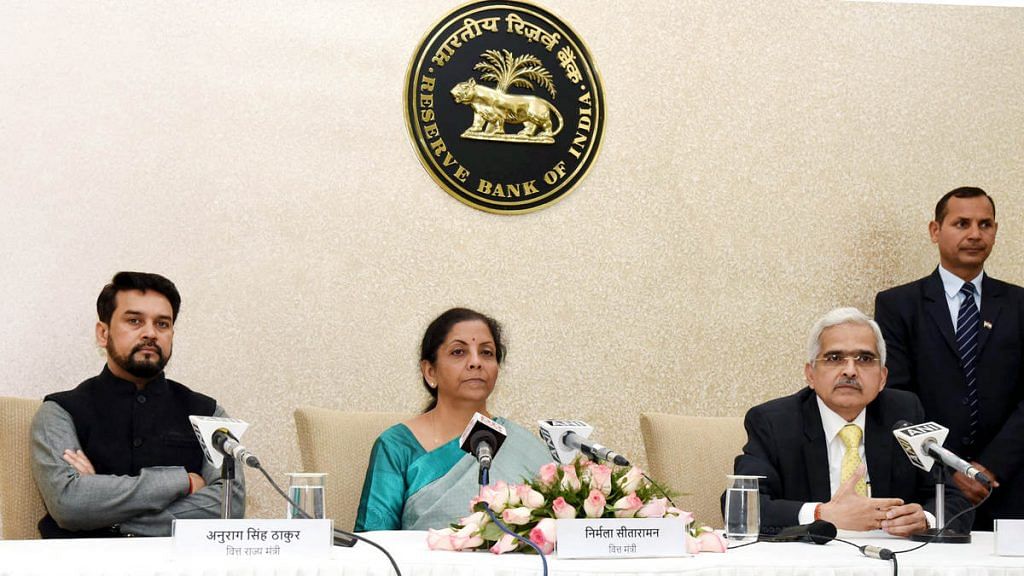The Reserve Bank of India cut interest rates, reduced cash reserve ratio (CRR) and announced a moratorium on payments of EMIs, among other measures, to provide credit and liquidity to the Indian economy under the Covid-19 lockdown.
These measures will provide relief to the middle classes with EMIs, but could have limited immediate effect for keeping the economy going, unless additional steps accompany these measures.
Credit measures alone will not be adequate in the present context without being accompanied by health safety plans: This is not a financial crisis, but fundamentally, a health emergency.
The RBI’s financial package will work if accompanied by a credible roll-out plan of how to get production as well as consumption back on track with the ultimate lifting of the lockdown, through putting adequate health safety norms in place. Through this, policy makers can ensure that businesses have the capacity to serve the economy during the lockdown period, and bounce back when the lockdown is over.
Also read: RBI has also liberalised forex trading by allowing banks to trade in offshore markets
The first, and most crucial, step
First, firms will make few new investments in the next three weeks. What businesses are in need of now is working capital, or loans to pay salaries of workers. Will banks give companies fresh working capital loans when production has stopped? If it is clear that the lockdown is only for three weeks, or even less, and not more, this may be possible. If not, and bankers do not know how long the lockdown may last, they may be reluctant to do so.
For greater clarity on this issue, the government needs to prepare a plan for how the lockdown will be lifted. One approach that has been proposed is to open up the economy sector by sector, like how Europe is planning to do.
The first set of sectors that may be allowed to start production at their manufacturing locations can be essential services like food and medical supplies. This may include bread, milk, edible oil, salt, wheat and rice mills, medicines, medical equipment, soaps, detergents and masks.
This approach sounds reasonable, but it must be understood that there are huge backward and forward linkages among sectors. There cannot be long time-lags in between opening up different parts of a supply chain.
For example, while bread and soaps are essentials, can they be sold without the wrapping? While edible oil is essential, bottles or bags are needed to sell them in. Medicines are essential, but cannot be produced and sold without chemical ingredients and foils. Inventories of required inputs may only last for a few days.
The roll-out plan for safe production, if sequenced like this, has to be rolled out very rapidly to protect supply chains, given the linkages between industries and firms.
It will be important to enforce safety norms for workers and provide for large-scale testing of workers at these factories, as well as supplies of required precautionary equipment such as masks. This will be a critical element, not just in bringing essential services back on their feet as soon as possible for humanitarian reasons, but also for keeping these firms as going concerns to whom banks can start lending working capital.
Before the Covid-19 crisis, the banking system in India was already in a difficult place and was not willing to lend. Now with greater uncertainty, the reluctance to lend will be greater. To encourage lenders to lend, interest rate cuts will not be sufficient. Policy-makers need to give a clear plan on how production will be sustained during the health crisis, and how provisions will be put in place to ensure safety of workers.
The next few steps
Second, small shopkeepers and producers in India often take personal credit to run their business. The banking system may need to provide uncollateralised and top-up emergency loans to such businesses during this the lockdown period to help them survive. This is similar to the step the government has taken in raising the loan amount under Self-Help Group loan schemes to Rs 20 lakh from Rs 10 lakh.
Third, millions of self-employed and small businesses depend on daily sales of their services to customers. From rickshaw-pullers, auto drivers and vegetable sellers to the millions of retail shops around the country, the consumer of these informal sector businesses is the supplier of funds. If consumers are locked down, these businesses will very soon fail.
Opening credit lines are inadequate for the self-employed, unless accompanied by an immediate plan of how customers will be allowed back in markets. The present curfew conditions and restrictions on movement will need to be immediately replaced by health safely rules and provisions, so that consumers may continue to purchase goods and services.
For this, India needs large-scale testing of citizens, like in South Korea and Singapore, who were able to test and isolate in ways that can cover the entire population, without locking the country down.
Finally, at present, with manufacturing halted under the all-India lockdown, the demand for new credit is low. So, in the immediate context, we need to consider the impact of the rate cut on existing borrowers.
What will help borrowers immediately is the moratorium on payments. Rate cuts invariably take time to get transmitted through the system, as savings rates can change but the returns on fixed deposits are made at old rates. This limits the immediate impact of the decisions taken Friday by the RBI.
The author is an economist and a professor at the National Institute of Public Finance and Policy. Views are personal.
Also read: 3 critical steps Modi govt must take to protect people and economy during Covid-19 lockdown
